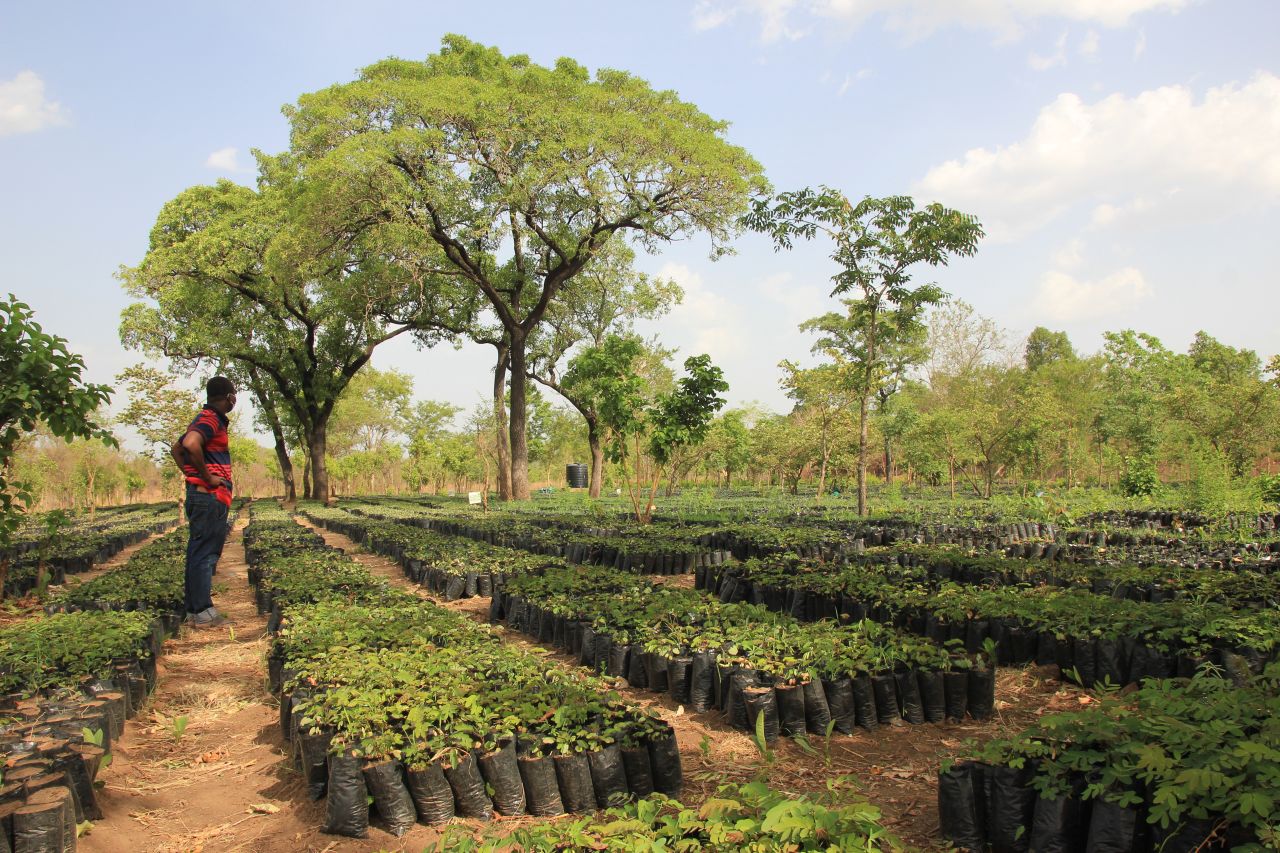





El proyecto de Restauración del Paisaje Forestal estableció 3 viveros comunitarios en la zona del proyecto y crió 1 millón de plantones de árboles locales entre 2020 y 2022. Se rehabilitaron los bosques naturales degradados por la producción de carbón vegetal, la tala ilegal, el pastoreo de ganado, los incendios de matorrales, etc., y se establecieron 315 ha con especies arbóreas de crecimiento rápido para que sirvieran como fuente de madera para la producción de carbón vegetal. Los propietarios de tierras y de plantaciones recibieron formación sobre los servicios ecosistémicos de los bosques naturales, el seguimiento de los bosques y la biodiversidad, las medidas de rehabilitación y las prácticas agroforestales.
Las actividades se mantienen a largo plazo y se refuerza su función como sumideros de carbono mediante planes de gestión y sistemas de seguimiento para la rehabilitación de bosques naturales degradados y zonas agroforestales.
La disponibilidad de tierras, unos derechos claros de uso de las mismas y el compromiso de la comunidad son fundamentales para el establecimiento y la gestión sostenible de la madera energética y los emplazamientos agroforestales. Especialmente en zonas muy degradadas con escasas fuentes de biomasa leñosa, las especies arbóreas de crecimiento rápido pueden proporcionar a corto plazo leña para la producción de carbón vegetal.
En zonas con un buen potencial de regeneración natural no suele ser necesario plantar árboles. Es más importante reducir riesgos como los incendios forestales incontrolados, que perjudican la regeneración inminente. Las especies arbóreas de crecimiento rápido seleccionadas deben adaptarse a las condiciones del lugar e integrarse en sistemas agroforestales o cinturones verdes contra incendios para reducir el riesgo de pérdidas por incendios forestales o pastoreo.